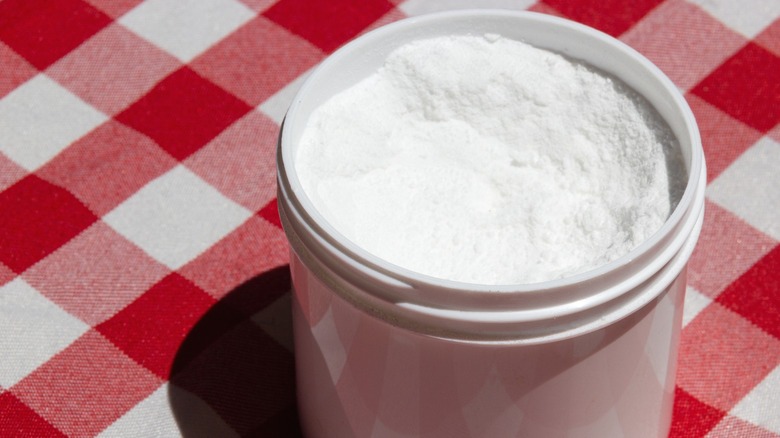You Probably Never Realized What Cream Of Tartar Really Is
Careful observers may note, when looking at a small bowl of cream of tartar, that it is neither particularly creamy nor particularly like anything we'd call "tartar." In fact, some may confuse it with the tartar sauce that goes perfectly with fried fish and can be made with just three ingredients. But no — cream of tartar is a powder, most commonly used to lend acidity and dimension to baked goods. As for what this curious white powder is made of, the answer lies in the winemaking process.
You see, grapes contain something called tartaric acid, which crystallizes as wine ages. The result is something called potassium bitartrate, which you will often find lining the inside of a cask or along the bottom of a cork. As you might expect from something called "tartaric acid," these crystals are quite acidic, and they can be utilized when baking in order to help cakes and cookies rise. They also lend just a touch of acid to the flavor, usually in a pleasant way. The word "cream" in its name refers not to its consistency, but to its status as a desirable byproduct, in the same way one may refer to "cream rising to the top."
Cream of tartar's chemical properties were discovered by a Swedish scientist
People have, of course, been making wine for thousands of years, and winemakers knew that those crystals on the inside of their casks were a byproduct of the winemaking process. But it wasn't until the 18th century that someone isolated tartaric acid and identified its chemical properties. That man was Carl Wilhelm Scheele, a somewhat obscure Swedish chemist who nonetheless identified a number of different elements, including oxygen (although another chemist working independently was published first), nitrogen, and chlorine. (He also ended up dying an early death thanks to his habit of tasting many of the dangerous elements he worked with — a common occupational hazard for chemists back in the day.)
In fact, Scheele went on something of an acid-isolating spree. In addition to tartaric acid, he discovered a bunch of other acids he sourced from food. There was lactic acid, which he sourced from milk; citric acid, from lemons; and malic acid (which is often used to flavor salt and vinegar potato chips), from apples. Even if he had never isolated tartaric acid, Scheele would have contributed a great deal to science; thankfully, he's also responsible for bleached flour angel food cake turning out nice and robust, too.

